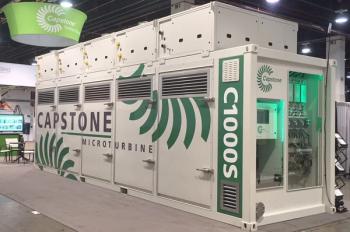
Steam turbine disc corrosion
Stress corrosion cracking (SCC) of discs (at keyways, bores, and blade attachments) is caused by a combination of high surface stresses, a susceptible material and operational and shutdown environments. Design-related root causes are the most important and prevalent. They include high surface tensile stresses and stress concentrations, and use of high strength materials.
This article contains excerpts from the paper, "Steam turbine corrosion: Problems and solutions" presented at the 37th Turbomachinery Symposium by Otakar Jonas and Lee Machemer of Jonas, Inc.
Sources of stresses that contribute to SCC of discs include:
- Basic centrifugal load caused by rotor rotation. Locally high concentration of centrifugal loads caused by variation in the gaps (gauging) between blade and disc rim attachment.
- Residual machining stresses.
- Vibratory stresses—interaction of SCC and corrosion fatigue. Also, vibratory stresses reduce the life of the cracked disc when the flaws reach a sufficient size that fatigue becomes a dominant mechanism.
Steam chemistry root causes of SCC and CF cracking include:
- Operating outside of recommended steam purity limits for long periods of time; sometimes caused by organic acids from decomposition of organic water treatment chemicals.
- Condenser leaks—minor but occurring over a long period of time.
- Condenser leaks—major ingress, generally one serious event, and the system and turbine not subsequently cleaned.
- Water treatment plant or condensate polisher regeneration chemicals (NaOH or H2SO4) leak downstream.
- Improperly operated condensate polisher (operating beyond ammonia breakthrough, poor rinse, etc.).
- Shutdown environment: poor layup practices plus corrosive deposits. Sodium hydroxide is the most severe SCC environment encountered in steam turbines. The sources of NaOH include malfunctioning condensate polishers and makeup systems and improper control of phosphate boiler water chemistry combined with high carryover. Many other chemicals can also cause SCC of low alloy steels. The chemicals used in turbine assembly and testing, such as molybdenum disulfide (lubricant) and Loctite™ (sealant containing high sulfur), can accelerate SCC initiation (Turner, 1974; Newman, 1974).
Solutions
In most cases where material yield strength is <130 ksi (895 MPa), the solution to disc SCC is a design change to reduce stresses at critical locations. This has been achieved by eliminating keyways or even disc bores (welded rotors) and by larger radii in the blade attachments. Higher yield strength (>130 ksi, 895 MPa) low alloy steel discs should be replaced with lower strength materials.
The goal is to keep the ratio of the local operating stress to yield stress as low as possible, ideally aiming for the ratios to be less than 0.6. Minimizing applied stresses in this manner is most beneficial in preventing initiation of stress corrosion cracks. Once cracks begin to propagate, a reduction in stress may be only marginally effective unless the stress intensity can be kept below ~10 to 20 ksi-in1/2 (11 to 22 MPa-m1/2).
This is because of the relative independence of the crack growth rate over a broad range of stress intensities. For many rim attachment designs, such levels of applied stress intensity are impossible to achieve once an initial pit or stress concentration has formed. An emerging solution to disc rim stress corrosion cracking is a weld repair with 12%Cr stainless steel.
Another solution has been to shot peen the blade attachments to place the hook fit region into compression. Good control of the steam purity of the environment can help to prevent or delay the SCC. Maintaining the recommended levels of impurities during operation and providing adequate protection during shutdown can help minimize the formation of deposits and corrosive liquid films, and lengthen the period before stress corrosion cracks initiate.
The operating period(s), events, or transients that are causing excursions in water and steam chemistry should be identified using the monitoring locations and instrumentation recommended in the independent water chemistry guidelines (EPRI, 1986, 1994c, 1998b, 1998c, 2002a; Jonas, et al., 2000) and special monitoring as shown in Figure 15.
Newsletter
Power your knowledge with the latest in turbine technology, engineering advances, and energy solutions—subscribe to Turbomachinery International today.





